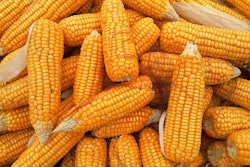
Brazil to Possibly Negotiate Wheat Tariff-Free Import Quota With U.S.
Brazil is considering granting an import quota of 750,000 MT of U.S. wheat per year without tariffs in exchange for other trade concessions when the U.S. and Brazil meet in Washington, D.C. this week.
The 750,000 MT is about 10% of Brazilian annual wheat imports and is part of a twenty year old commitment to import 750,000 tonnes of wheat a year free of tariffs that Brazil made during the World Trade Organization Uruguay Round of talks on agriculture but never adopted.
Both initial and unofficial estimates believe that the quota of 750,000 tonnes of wheat exports from the U.S. to Brazil could generate between $75-120 million a year.
Brazil buys most of its imported wheat from Argentina, and some from Uruguay and Paraguay, without paying tariffs because they are all members of the Mercosur South American customs' union. Imports from other countries pay a 10% tariff.
On the table for the U.S. would be allowing some type of arrangement for beef and sugar imports. Sugar is one of the most protected agricultural commodities in the U.S.
What it means for U.S. Farmers: Allowing 75,000 tonnes of tariff-free annual wheat exports into Brazil could be an immense benefit to the HRW producer. Because Brazil strongly desires to enter the U.S. market for beef, wheat seems like a strong commodity to bargain with.
Crop Progress Condition Scores: HRW Improving, SRW Status Quo
Aided by rain last week, Monday’s USDA’s weekly crop progress scores saw a general improvement in HRW’s Texas and Oklahoma scores.
The rain last week helped deliver moisture which elevated the index to a 62 vs a 57 last week. In Texas, the percentage of crop rated “excellent” rose by 5 percentage points while the percentage of the crop rated “very poor” and “poor” declined by 7 percentage points to 23%.
In Oklahoma the percentage of the crop rated “very poor” and “poor” declined by 4 percentage points to 4%. None of the survey has the crop rated “very poor”.
SRW crop in Mississippi and Louisiana showed incremental improvements as a lack of rain and wind helped.
Arkansas’s condition scores remain a concern as 30% of the crop is rated as “very poor” and “poor” due to an abundance of field water.
What it means for U.S. Farmers: While the condition scores are generally an arbitrary measurement the numbers can be traded values by speculative entities. With SRW vulnerable to downside risks in the delta the opposite is true in HRW. Timely rains for Texas, Oklahoma and south-west Kansas in the most recent 5-7 model runs should continue to deliver moisture and aid production.
The risk of trading futures, hedging, and speculating can be substantial. FBN BR LLC (NFA ID: 0508695)










